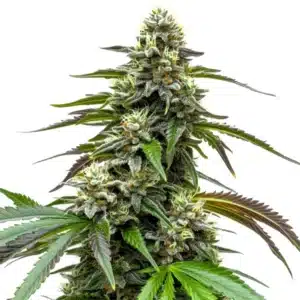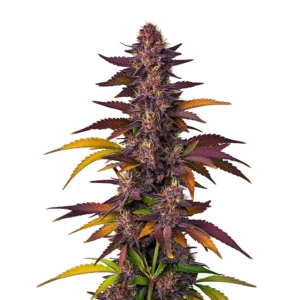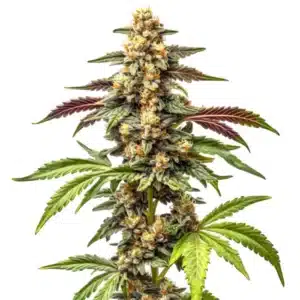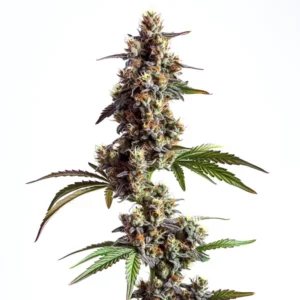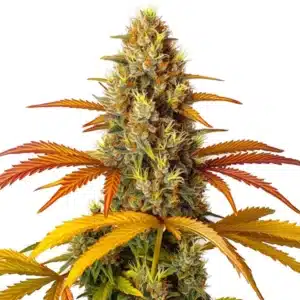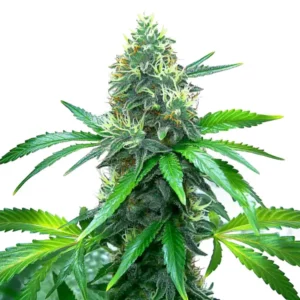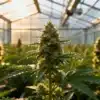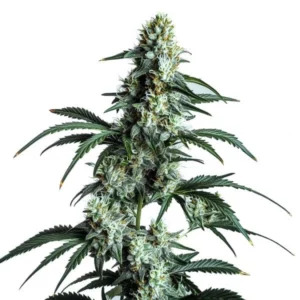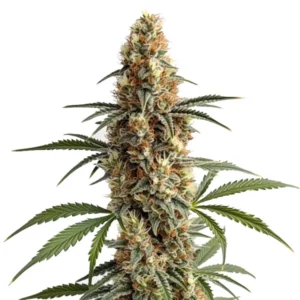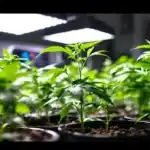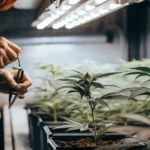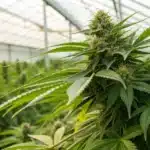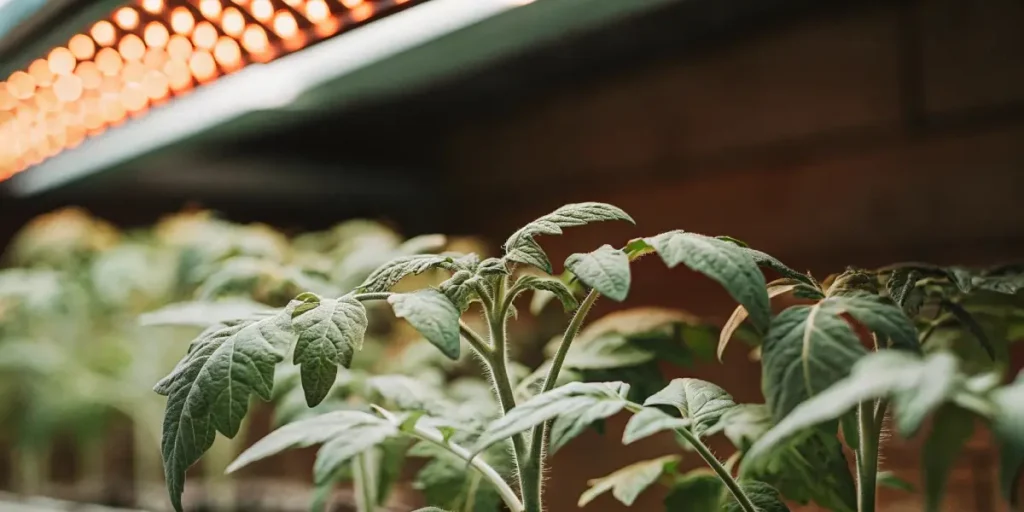
Plant Hormone Crosstalk under LED Lighting
Plant hormone crosstalk under LED lighting is an exciting area for cannabis growers. It involves the interactions between different plant hormones when exposed to LED lights. These lights are popular for indoor growing because they are energy-efficient and customizable.
LED lighting effects on plant hormone interactions can significantly influence cannabis growth. Hormones like auxins, gibberellins, and cytokinins interact differently under various light spectrums. This interaction can alter plant height, leaf size, and even flowering time.
Recommended Strains
White LSD Auto
|
|
THC | 20% - 24% (Medium) |
|
|
Type | Autoflowering |
|
|
Yield | Low |
|
|
Phenotype | 50% Indica / 50% Sativa |
LSD Auto
|
|
THC | 23% - 25% (High) |
|
|
Type | Autoflowering |
|
|
Yield | High |
|
|
Phenotype | 65% Indica / 35% Sativa |
Knowing how these hormones work under LED lights can help you optimize growth. For instance, using specific light spectrums can enhance or suppress certain hormones. This gives you control over plant characteristics, enhancing yield or flavor.
How LED Lights Affect Plant Hormones
LED lights are unique because they allow control over the light spectrum. This spectrum directly influences phytohormone response to LED light spectrum, affecting plant growth. Blue light can stimulate auxin production, leading to more robust stems.
Red light plays a different role. It encourages flowering by increasing gibberellin levels. In cannabis growing, this is crucial for promoting bud development. Green light, though less discussed, can penetrate deeper into the canopy, affecting lower leaves and branches.
The versatility of LED lights allows growers to simulate various stages of sunlight, which can be critical for different growth phases. By adjusting the light spectrum, you can mimic dawn, midday, and dusk, thereby enhancing the plant hormone crosstalk under LED lighting. This adaptability is essential for optimizing the growing environment.
Plant hormone signaling under LED lights also benefits from the ability to target specific areas of the plant, promoting uniform growth. This precision ensures that all parts of the plant receive the necessary light exposure, reducing the risk of uneven development and enhancing overall plant health.
Auxins and LED Lighting
Auxins are hormones that regulate plant growth direction. Under blue LED lights, auxin distribution can be altered, leading to more upright growth. This is beneficial for cannabis strains like Blue Dream, where structure and height are desirable traits.
Using LED-induced hormonal changes in plants, you can control plant shape. By adjusting light intensity and spectrum, auxin effects can be moderated. This is especially useful for indoor setups with limited space.
LED lighting effects on plant hormone interactions are particularly pronounced with auxins due to their role in phototropism. By fine-tuning the light spectrum, growers can encourage specific growth patterns, enhancing both aesthetic appeal and functional growth habits.
Moreover, the ability to customize light exposure with LED technology means that growers can experiment with different settings to see how auxin-driven traits manifest, offering a hands-on approach to knowing plant growth LED lighting hormone crosstalk.
Promos & Deals
Cytokinins and Red Light
Cytokinins are essential for cell division and growth. Red LED lights increase cytokinins, promoting flowering and fruiting. For cannabis growers aiming for high yields, this is a significant advantage.
Strains such as Sour Diesel benefit from increased cytokinin activity. The enhanced flowering phase leads to denser buds and a more abundant harvest. Adjusting red light exposure can fine-tune these effects.
The synergy between cytokinins and red light is a testament to the power of plant hormone crosstalk under LED lighting. By leveraging this interaction, growers can achieve a balance between vegetative and flowering phases, optimizing plant productivity.
Additionally, knowing how cytokinins respond to different wavelengths can help growers manage plant size and density, ensuring that resources are efficiently utilized. This knowledge is vital for maximizing the efficiency of indoor growing spaces.
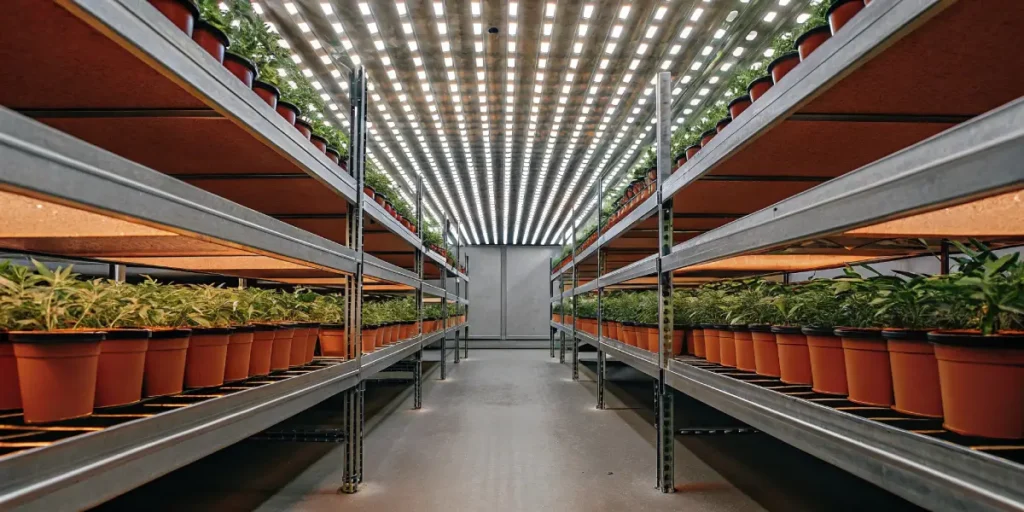
Balancing Gibberellins and LEDs
Gibberellins influence stem elongation and flowering. Under specific LED lighting, gibberellin levels can be optimized for desired plant height. This is crucial for strains that tend to grow tall.
For instance, leveraging plant hormone signaling under LED lights can help manage sativa strains that naturally grow taller. Adjusting the light spectrum helps maintain manageable plant sizes indoors.
Gibberellins also play a function in seed germination, making their management under LED lighting a key consideration from the onset of growth. By knowing the phytohormone response to LED light spectrum, growers can ensure optimal starting conditions for their plants.
LED-induced hormonal changes in plants provide a framework for adjusting gibberellin levels, allowing growers to tailor the growth cycle to their personal goals, whether that be speeding up harvests or maintaining certain plant heights for space management.
Practical Applications for Cannabis Growers
For practical applications, knowing LED lighting effects on plant hormone interactions is key. By adjusting LED settings, growers can influence hormone levels to control growth patterns.
Choosing the right cannabis strains is also crucial. For example, Blue Dream benefits from specific light spectrums that enhance its natural growth characteristics. Tailoring LED settings to strain needs can optimize growth and yield.
One of the primary benefits of using LED lights is their ability to simulate different environmental conditions. This allows growers to experiment with plant hormone crosstalk under LED lighting, creating optimal growth conditions for different stages of the plant lifecycle.
Moreover, by documenting changes in plant development in response to varied LED settings, growers can develop a deeper knowing of plant hormone signaling under LED lights. This knowledge can be shared within the growing community, elevating the overall standard of cannabis cultivation practices.
Optimizing Growth with LEDs
LED lights offer flexibility in indoor growing setups. They allow precise control over the light spectrum, which in turn affects hormone crosstalk. This control can lead to better growth outcomes for various cannabis strains.
Using LEDs effectively requires some experimentation. Start by adjusting light intensity and color spectrum based on your specific strain’s needs. Monitor how your plants respond and make incremental changes.
The adaptability of LED technology provides a platform for continuous improvement in cannabis cultivation. By exploring different light settings, growers can refine their approaches, identifying optimal conditions for plant growth LED lighting hormone crosstalk.
Additionally, the ongoing analysis of plant responses can reveal insights into LED-induced hormonal changes in plants, guiding future growing strategies. This iterative process emphasizes the importance of data collection and analysis in achieving successful harvests.
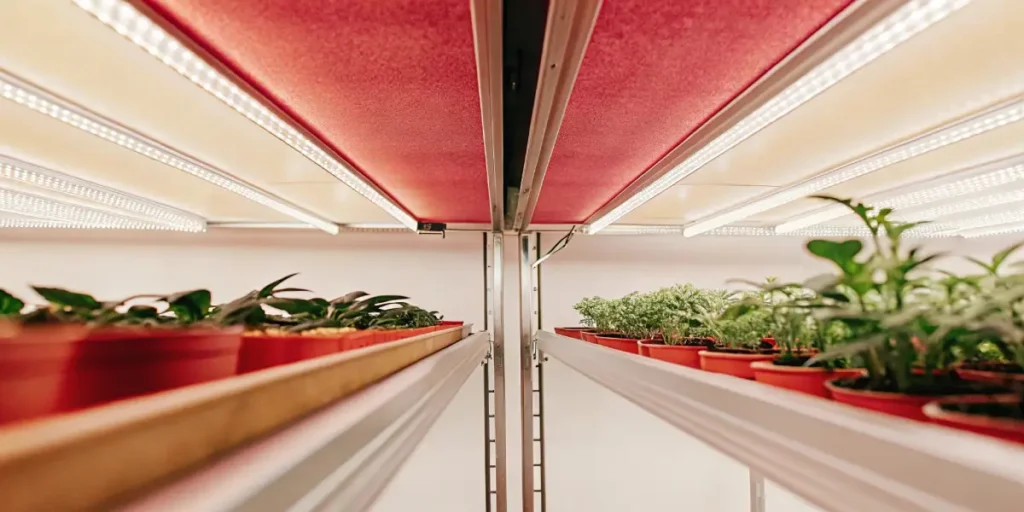
FAQs
What is plant hormone crosstalk under LED lighting?
Plant hormone crosstalk under LED lighting refers to the interaction of plant hormones when exposed to LED light spectrums. This interaction can change how hormones like auxins, gibberellins, and cytokinins function, affecting plant growth and development.
For cannabis growers, knowing this interaction is vital. It allows you to manipulate plant characteristics like height, flowering time, and yield by adjusting the LED lights’ color and intensity.
As the industry continues to explore the potential of LED technology, the importance of knowing plant hormone crosstalk under LED lighting becomes increasingly evident. This knowledge equips growers with the tools needed to tailor their growing environments for optimal results.
By staying informed about advancements in LED technology and plant hormone science, growers can maintain a competitive edge, ensuring that their cultivation practices are both innovative and effective.
How does LED lighting affect cannabis growth?
LED lighting affects cannabis growth by influencing hormone levels. Different light spectrums can enhance or suppress specific hormones, leading to changes in plant structure and yield.
For instance, red light can promote flowering, while blue light can enhance vegetative growth. Adjusting these lights based on the growth stage can optimize your cannabis plants’ development.
The ability to manipulate the light spectrum with precision allows for targeted interventions at various growth stages, ensuring that plant hormone signaling under LED lights is conducive to robust development.
By knwoing the nuances of LED lighting effects on plant hormone interactions, growers can develop tailored lighting strategies that maximize the potential of their cannabis plants, leading to healthier and more productive harvests.
Which cannabis strains benefit most from LED lighting?
Many cannabis strains benefit from LED lighting, but those with specific growth traits can see the most advantage. Strains like Blue Dream, OG Kush, and Sour Diesel are known for their responsiveness to controlled lighting environments.
These strains can be optimized for yield, flavor, or growth traits by adjusting the LED light spectrum, making them ideal candidates for indoor LED setups.
LED lighting provides a unique opportunity to customize growth conditions for specific strains, enhancing their natural characteristics and ensuring that plant growth LED lighting hormone crosstalk is effectively managed.
By selecting strains that align with your cultivation goals and knowing their specific light requirements, you can harness the full potential of LED technology to achieve exceptional results.
Can LED lighting replace natural sunlight for cannabis growth?
LED lighting can effectively replace natural sunlight for indoor cannabis growth. It offers the advantage of controllability, allowing growers to tailor the light spectrum to their plants’ needs.
However, while LEDs provide flexibility and efficiency, they may not fully replicate all aspects of natural sunlight. Growers should aim to mimic natural conditions as closely as possible for the best results.
Despite this limitation, the precision of LED lighting makes it an invaluable tool for managing plant hormone crosstalk under LED lighting. This ability to fine-tune light conditions can lead to superior growth outcomes, even in the absence of natural sunlight.
By continuously refining their LED setups, growers can approach the quality of natural sunlight, ensuring that their plants receive the optimal balance of light conditions for healthy development.
What are the benefits of using LED lights for growing cannabis?
LED lights offer numerous benefits for growing cannabis. They are energy-efficient, reducing electricity costs. They also produce less heat, minimizing the risk of heat stress on plants.
Additionally, the ability to customize the light spectrum allows for precise control over plant hormone crosstalk. This can lead to optimized growth conditions, resulting in higher yields and better quality buds.
The environmental benefits of LED technology cannot be overlooked. By reducing energy consumption and heat output, LED lights contribute to more sustainable growing practices, aligning with broader environmental goals.
Furthermore, the customization options available with LEDs enable growers to experiment with different light settings, gaining insights into LED-induced hormonal changes in plants and refining their cultivation techniques for optimal results.


